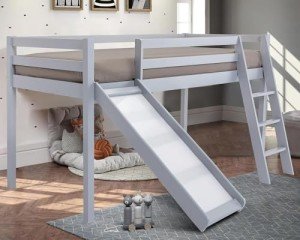Understanding Slide Beds: A Comprehensive Overview
Introduction
Slide beds represent an innovative advancement in the field of transport and logistics, especially in the context of the trucking industry. These specialized beds offer enhanced loading and dumping capabilities, increased performance, and much better safety standards. As his explanation for logistics solutions becomes more advanced, slide beds emerge as an important tool for business seeking to enhance their operations. This short article looks into the different aspects of slide beds, including their design, benefits, types, and maintenance factors to consider.
What is a Slide Bed?
A slide bed, typically referred to as a sliding truck bed or slide-out bed, is a kind of truck bed created to extend and pull back, enabling easier access to freight. These beds can slide out either by hand or through automated systems, helping with loading and unloading while decreasing the strain on employees.
How Do Slide Beds Work?
The performance of slide beds can vary based on their design:
- Manual Slide Beds: These beds require several individuals to pull or press the bed out. While simple and cost-efficient, manual slide beds may not appropriate for durable applications.
- Automated Slide Beds: These beds run through hydraulic or electrical systems that permit effortless extension and retraction at the push of a button. Automated systems typically include safety features to prevent accidents throughout operation.
The basic operation of these systems can be summed up in the following table:
| Type | System | Usage | Pros | Cons |
|---|---|---|---|---|
| Manual Slide Beds | Pull/push operation | Light to medium loads | Lower cost | Needs physical labor |
| Automated Slide Beds | Hydraulic/Electric | Heavy loads and frequent use | Convenience and efficiency | Higher initial financial investment |
Benefits of Using Slide Beds
Slide beds use a number of advantages that make them an appealing alternative for services in various sectors. These benefits can be categorized into functional efficiency, security, and cost-effectiveness:
Operational Efficiency
- Easy Access: Slide beds enable employees to reach freight without needing to climb into the truck or maneuver around tight spaces.
- Time-Saving: Quick filling and discharging mean decreased turnaround times for cars, resulting in increased efficiency.
- Better Space Utilization: The ability to extend the bed implies that freight can be organized better, facilitating much better usage of area.
Security
- Decreased Injury Risk: With simple access to freight, the probability of musculoskeletal injuries reduces considerably.
- Boosted Stability: Slide beds are created to accommodate heavier loads more equally, enhancing lorry stability.
Cost-Effectiveness
- Increased Payload Capacity: Slide beds enable for higher volume transport without making considerable modifications to automobiles.
- Long-Term Durability: Investing in a quality slide bed can lead to lowered upkeep costs with time.
Types of Slide Beds
There are numerous kinds of slide beds readily available in the market, each dealing with different requirements and applications. Here are the most common types:
- Standard Slide Beds: These are the most prevalent and serve basic purposes across different sectors.
- Durable Slide Beds: Designed for larger automobiles and heavier loads, these beds strengthen structural stability.
- Custom Slide Beds: Customized services cater to particular industry needs, such as animals transportation or customized equipment.
Slide Bed Types Comparison
| Type | Suitable Use | Optimum Load Capacity | Personalization Options |
|---|---|---|---|
| Standard Slide Beds | General transportation | As much as 3,000 lbs | Limited |
| Durable Slide Beds | Industrial and construction | Over 3,000 pounds | Available |
| Custom Slide Beds | Specialized transport needs | Differs by design | Extremely adjustable |
Maintenance Considerations
Keeping a slide bed is essential to guarantee its longevity and optimal performance. Here are necessary upkeep ideas:
- Regular Inspections: Routinely look for wear and tear, making sure that all moving parts are working properly.
- Lubrication: Keep moving components well-lubricated to decrease friction and prevent deterioration.
- Cleanliness: Regularly clean the slide bed to eliminate debris and impurities that might hinder operations.
- Tighten Fasteners: Periodically ensure that all bolts and screws are tightened up to avoid structural failure.
Frequently Asked Questions About Slide Beds
Q1: Are slide beds ideal for all kinds of trucks?A1: While slide beds can be adapted for a variety of truck designs, it is vital to seek advice from an expert to ensure compatibility.
Q2: How much weight can a slide bed hold?A2: The weight capability of slide beds varies widely; standard slide beds usually hold up to 3,000 lbs, while heavy-duty choices can accommodate far more.
Q3: How often should slide beds be preserved?A3: Regular upkeep is essential; assessments need to be brought out at least every six months, with more regular checks suggested for heavy-use vehicles.
Q4: Can I personalize a slide bed for my particular needs?A4: Yes, lots of producers use customization options to deal with industry-specific requirements.
Conclusion
Slide beds are rapidly becoming amongst the most efficient options for improving logistics operations. With their capability to boost access to cargo and assist in quicker loading and dumping procedures, they exemplify a mixing of innovation and utility that deals with the needs of modern-day transport. By choosing the ideal type of slide bed and keeping it effectively, services can considerably improve their operational performance, security, and cost-effectiveness. The future looks guaranteeing for slide beds, as they continue to evolve and satisfy the growing demands of the logistics market.

